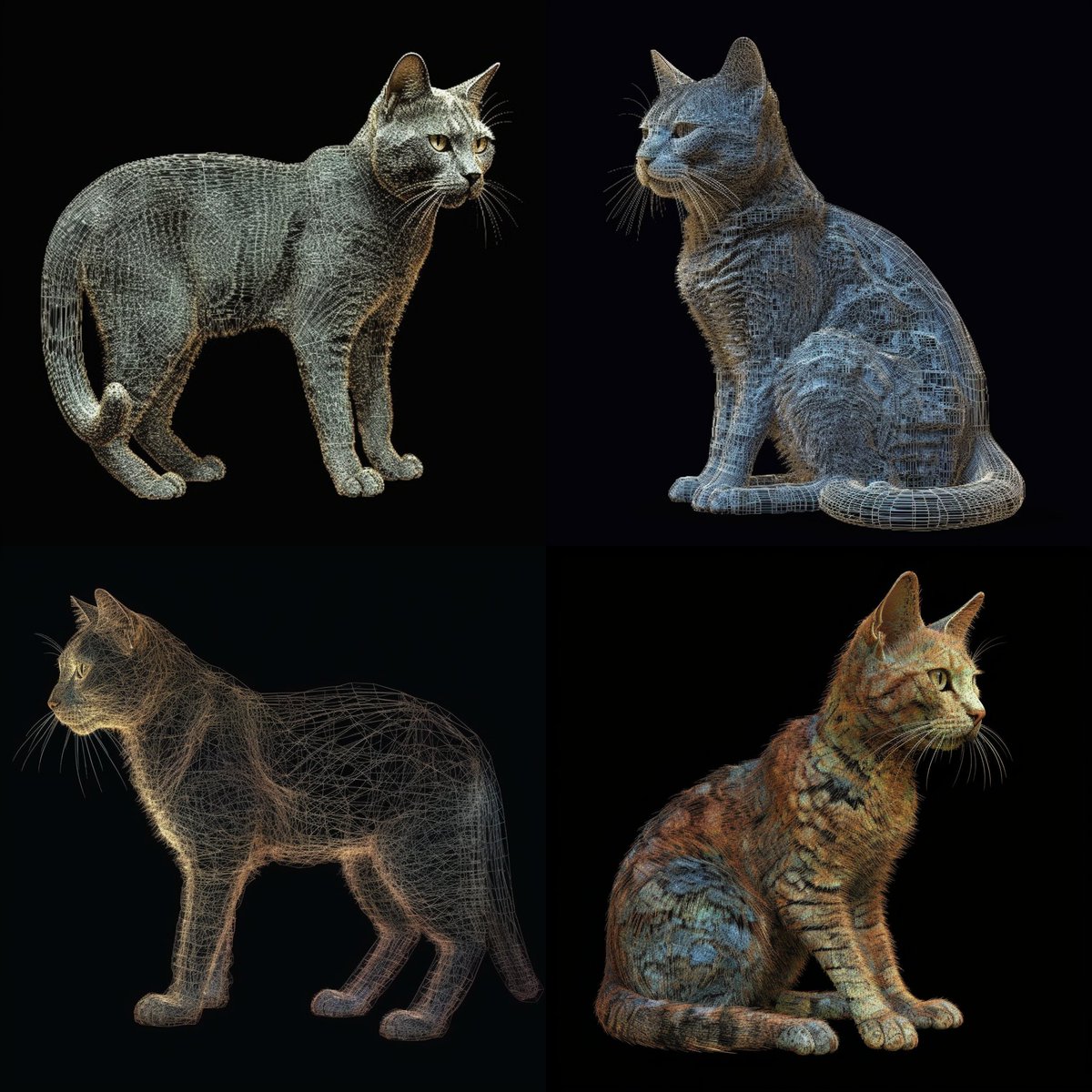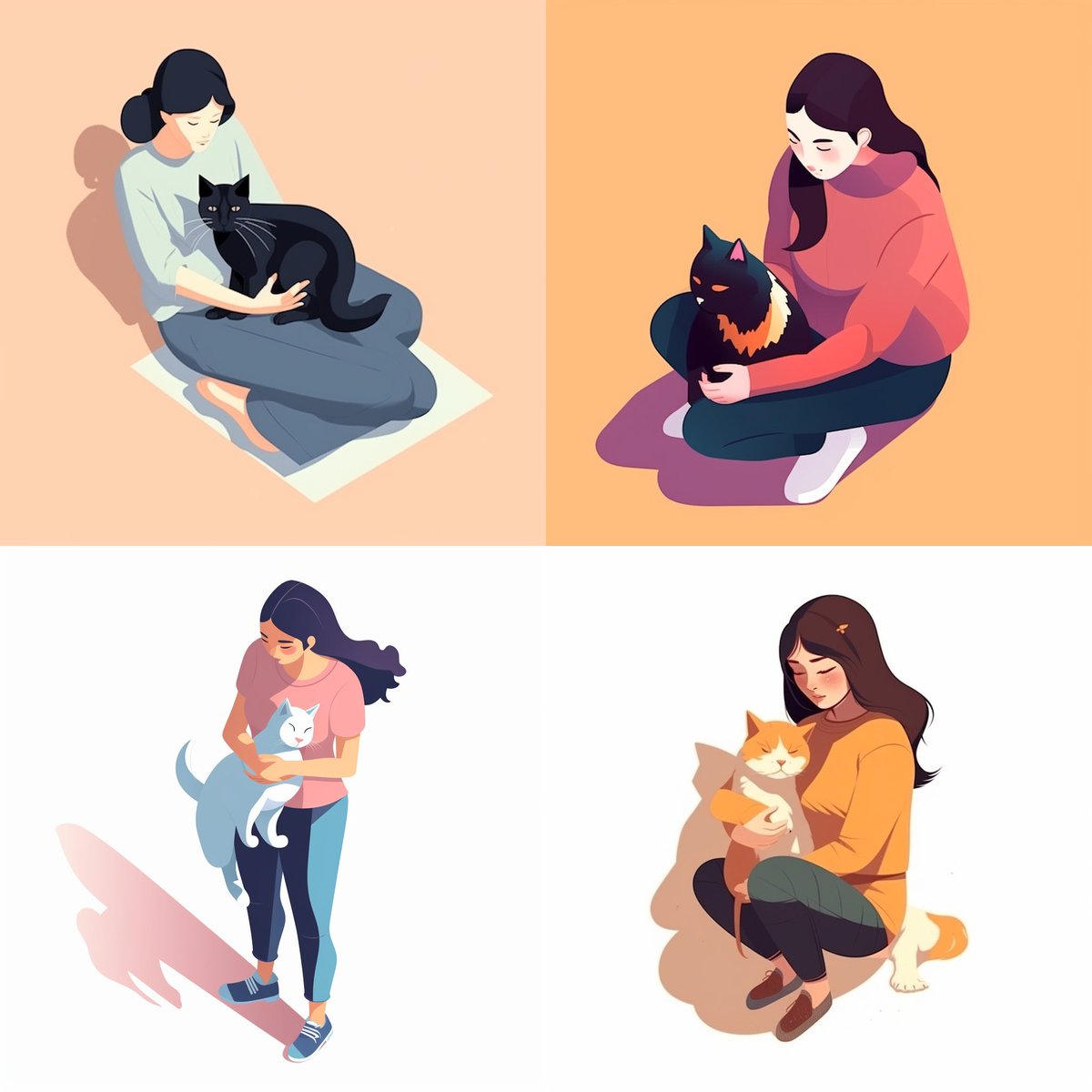Midjourney - Styles, part 2
Here are 15 styles & effects in photography and illustration that you can use to transform your images or to add to them an original visual effect.
They can be integrated into simple prompts or more complex scenes.
🧵Thread with visual examples👇
Here are 15 styles & effects in photography and illustration that you can use to transform your images or to add to them an original visual effect.
They can be integrated into simple prompts or more complex scenes.
🧵Thread with visual examples👇

1. Clay render:
This style is a technique used in 3D modeling and rendering, where the objects are given a matte material that resembles clay. This style reduces detailed textures, colors, and reflections, highlighting the basic shapes and contours of the objects.
This style is a technique used in 3D modeling and rendering, where the objects are given a matte material that resembles clay. This style reduces detailed textures, colors, and reflections, highlighting the basic shapes and contours of the objects.

2. Polar Panorama:
This style, also known as "tiny planet" effect, is a photographic & digital editing technique that transforms an image into a globe-like shape. It creates the illusion of a small, self-contained world, often producing whimsical and eye-catching results.
This style, also known as "tiny planet" effect, is a photographic & digital editing technique that transforms an image into a globe-like shape. It creates the illusion of a small, self-contained world, often producing whimsical and eye-catching results.

3. ASCII Art:
The ASCII style refers to a form of digital art that uses ASCII characters (letters, numbers, and symbols found on a standard keyboard). This technique was popular in the early days of computer art and remains a distinctive and nostalgic style today.
The ASCII style refers to a form of digital art that uses ASCII characters (letters, numbers, and symbols found on a standard keyboard). This technique was popular in the early days of computer art and remains a distinctive and nostalgic style today.

4. Light Painting:
This style imitates the appearance of these long-exposure photographs, adding light trails or other illuminated elements to the image. This can create visually striking and unique compositions, bringing a sense of motion, energy, and creativity to an image.
This style imitates the appearance of these long-exposure photographs, adding light trails or other illuminated elements to the image. This can create visually striking and unique compositions, bringing a sense of motion, energy, and creativity to an image.

5. Double exposure:
The double exposure technique involves merging two or more images. When applied as a style, it creates surreal, dreamlike visuals that can evoke emotions, tell stories, or produce unique and visually striking artwork.
The double exposure technique involves merging two or more images. When applied as a style, it creates surreal, dreamlike visuals that can evoke emotions, tell stories, or produce unique and visually striking artwork.

6. Collodion Process:
This style refers to a photographic technique from the mid-19th century that produces images with unique visual characteristics. It imitates the look of these historical photographs, adding elements like subtle imperfections & a distinct signature tonal.
This style refers to a photographic technique from the mid-19th century that produces images with unique visual characteristics. It imitates the look of these historical photographs, adding elements like subtle imperfections & a distinct signature tonal.

7. Lithography:
This style is a printmaking technique that involves creating images with smooth tonal gradients & delicate lines. It imitates the appearance of traditional lithographic prints, which are created by drawing on a stone or metal plate with a grease-based medium.
This style is a printmaking technique that involves creating images with smooth tonal gradients & delicate lines. It imitates the appearance of traditional lithographic prints, which are created by drawing on a stone or metal plate with a grease-based medium.

8. Tessellation:
This style is a technique that involves the arrangement of geometric shapes or patterns in a repeating and interlocking manner, without any gaps or overlaps. This can create visually striking compositions, add a sense of order and structure to an image.
This style is a technique that involves the arrangement of geometric shapes or patterns in a repeating and interlocking manner, without any gaps or overlaps. This can create visually striking compositions, add a sense of order and structure to an image.

9. Mosaic:
Thi style emulates the appearance of mosaics, an ancient art form in which small pieces of colored materials (such as glass, stone, or ceramic). Mosaics are often characterized by their vibrant colors, geometric shapes, and intricate designs.
Thi style emulates the appearance of mosaics, an ancient art form in which small pieces of colored materials (such as glass, stone, or ceramic). Mosaics are often characterized by their vibrant colors, geometric shapes, and intricate designs.

10. Fresnel effect
This style style refers to a visual technique that mimics the way light interacts with different surfaces. When applied as a style it can create more lifelike highlights, reflections, and sheens, adding visual interest and complexity to the image.
This style style refers to a visual technique that mimics the way light interacts with different surfaces. When applied as a style it can create more lifelike highlights, reflections, and sheens, adding visual interest and complexity to the image.

11. Fresco:
This style is a technique inspired by the appearance of frescoes, a form of mural painting that dates back to antiquity. When applied as a style, it can creates characteristics such as a matte finish, subtle texture, visible brushstrokes, and earthy color palette.
This style is a technique inspired by the appearance of frescoes, a form of mural painting that dates back to antiquity. When applied as a style, it can creates characteristics such as a matte finish, subtle texture, visible brushstrokes, and earthy color palette.

12. Solarization:
This style is a visual technique inspired by a photographic process, also known as the Sabattier effect. When applied as a style, it alters the tonal values and colors in an image. This can create striking and surreal compositions with a dreamlike quality.
This style is a visual technique inspired by a photographic process, also known as the Sabattier effect. When applied as a style, it alters the tonal values and colors in an image. This can create striking and surreal compositions with a dreamlike quality.

13. Cyanotype:
Cyanotypes were historically used for creating blueprints in engineering, but they have also been employed in photography. This style is characterized by its distinct blue color and the high-contrast images it produces, often with a vintage or dreamy aesthetic.
Cyanotypes were historically used for creating blueprints in engineering, but they have also been employed in photography. This style is characterized by its distinct blue color and the high-contrast images it produces, often with a vintage or dreamy aesthetic.

14. Sgraffito:
This style is an technique used in ceramics & frescoes where layers of different colors are applied, and the top layer is scratched to reveal the underlying layer. When applied as a style, it can add depth and an artistic, handcrafted quality to the image.
This style is an technique used in ceramics & frescoes where layers of different colors are applied, and the top layer is scratched to reveal the underlying layer. When applied as a style, it can add depth and an artistic, handcrafted quality to the image.

15. Point cloud:
A point cloud is a collection of data points in a 3D space, often used in computer graphics & 3D modeling. When applied as a style, it can create a unique visual effect where the original image is represented by a series of points, dots or lines.
A point cloud is a collection of data points in a 3D space, often used in computer graphics & 3D modeling. When applied as a style, it can create a unique visual effect where the original image is represented by a series of points, dots or lines.

There are several ways to incorporate styles and effects into a prompt. Personally, I mostly use these simple formulations:
in the style of (insert style or effect name)
(insert style or effect name) style
or simply add the style or effect name at the end of your prompt.
in the style of (insert style or effect name)
(insert style or effect name) style
or simply add the style or effect name at the end of your prompt.
These styles & effects usually give pretty consistent but aren't always perfect. However, they add a unique touch to images generated with Midjourney and can sometimes be the starting point for more complex and surprising creations.
Thank you!
#midjourneyv5 #AIcommunity
Thank you!
#midjourneyv5 #AIcommunity
• • •
Missing some Tweet in this thread? You can try to
force a refresh

 Read on Twitter
Read on Twitter















